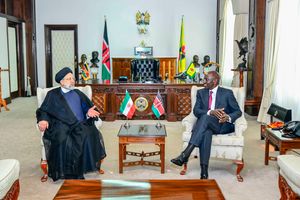Power of business networks and why social capital has no price tag

Vipingo Ridge Golf Club in Kilifi County, venue of the Safaricom Golf Tour grand finale. All participants had a great opportunity to build their social capital through interactions across the various divides present at the event.
What you need to know:
- Social capital is a critical asset given the need to cooperate both within and externally to accomplish tasks.
- Managerial ties make corporations more informed and flexible and, by using the information so obtained, have a positive effect on staff motivation.
- Social capital can be dichotomised into internal and external types.
Safaricom Plc two weeks ago held the grand finale of its Safaricom Golf Tour, in which finalists who qualified in the regional competitions across the country converged on Vipingo Ridge Golf Club to fight it out for the overall winner.
As part of the welcoming session, there was a cocktail reception on Friday for the participants, followed by another one on Saturday, preceding the prize-giving function.
The bar on the level of inclusivity achieved this year was lifted a notch higher compared to previous years.
It spread across the demographics, bringing in the youth and the not-so-young (one of the regional qualifiers was a 70-plus-year-old), gender (the overall winner was a woman), social levels (there were participants who had had their first flying experience coming to Vipingo).
There were guests (mainly from the corporate stakeholder institutions) invited by the sponsor, who had not come through the qualifier rounds.
In the mix were senior staff members of the sponsor, led by the CEO.
What was evident was that all participants had had a great opportunity to build their social capital through interactions across the various divides present at the event.
Influence and solidarity
Social capital is the goodwill available to individuals or groups whose source lies in the relations and provides the individual with information, influence and solidarity.
From a corporate perspective, it involves relationships inside and outside the firm that help in efforts to accomplish tasks, thereby creating value for stakeholders.
It is, therefore, a critical asset given the need to cooperate both within and externally to accomplish tasks.
Even multinationals need to establish alliances to enter new markets while entrepreneurial firms establish alliances to access resources, venture capital and other resources they cannot afford to maintain in-house.
Managerial ties, those boundary-spanning ties and the interpersonal connections of the top managers in a firm have vital influences on a company’s activities and may be a source of competitive advantage and hence superior firm performance.
Managerial ties make corporations more informed and flexible and, by using the information so obtained, have a positive effect on staff motivation, hence innovation leading to improved corporate performance.
Ambidextrous
Organisations that outperform their competition consistently tend to be ambidextrous. Such firms pursue a high degree of both exploration (search for new possibilities, and opportunities) and exploitation (reinforcement of existing advantages, technologies, and markets).
Such organisations are able to access a multiplicity of capabilities, giving them the flexibility to exploit opportunities and respond to threats.
The CEO can support organisational ambidexterity by forging business-related connections and improving his/her standing in the social network, which enables them to access rich and reliable information that is needed to pursue ambidexterity.
For the CEO to be effective in this, he/she needs to maintain timely and comprehensive communication with the rest of the top management team, coupled with decentralised power to better capitalise on the information advantage from their networks.
Social capital can be dichotomised into internal and external types.
Internal social capital is the links established among individuals within the organisation, while external social capital is external links to other firms and institutions.
Though it might depend on the uniqueness of the organisation, with other factors like organisational culture and structure coming into play, both internal and external social capital drive an organisation’s dependence on either exploration or exploitation to drive its competitive advantage in the marketplace.
An organisation may find that internal social capital drives its knack for radical product innovation and hence its competitive advantage while external social capital drives its new market entry and control of market share and hence competitive advantage.
This highlights the need to carefully manage the interactive difficulties that emerge when both internal and external social capital are combined.
In a world where we have a scarcity of resources, be it financial, human, or physical, organisations run their operations by relying on their relational capital, which is generated from the network routines and processes for competitive advantage, in which relational rents are jointly generated and owned by partnering firms that use inter-organisational strategy to establish relations that create value that would otherwise not be created by either firm independently.
Dr Olaka, EBS, is the Chief Executive Officer of the Kenya Bankers Association





